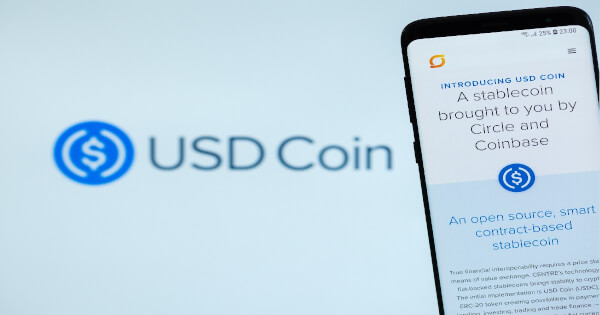Iris Coleman
Oct 09, 2024 04:45
Circle has released a comprehensive guide detailing the migration process from bridged USDC to native USDC on the Sui Mainnet, emphasizing best practices and benefits.
Circle has unveiled a detailed guide to assist developers and users in migrating from bridged USDC to native USDC on the Sui Mainnet. The guide aims to clarify the differences between the two forms of USDC and provide best practices for a smooth transition, according to Circle.
Understanding Bridged and Native USDC
Bridged USDC is generated when USDC is locked in a smart contract on its origin blockchain, and a synthetic version is minted on another blockchain through a third-party bridge application. On the Sui Mainnet, bridged USDC is referred to as USDC.e, a version that originates from Ethereum. In contrast, native USDC is issued by Circle directly on the Sui Mainnet, backed fully by liquid assets and redeemable 1:1 for US dollars.
Best Practices for Migration
Circle recommends several best practices for supporting both bridged and native USDC. Key suggestions include making native USDC the default for deposits, withdrawals, and swaps, updating top tokens and analytics pages, and emphasizing native USDC in user interfaces as a commonly used token.
Benefits of Using Native USDC
Native USDC offers several advantages over its bridged counterpart. It is fully reserved and always redeemable for US dollars, supported by Circle Mint and its APIs, and facilitates institutional on/off-ramps. Additionally, native USDC is interoperable across multiple blockchain networks via Circle’s Cross-Chain Transfer Protocol (CCTP).
Migration Methods
Developers can facilitate the migration from bridged to native USDC by creating swapping mechanisms or liquidity pools within their applications on the Sui Mainnet. Alternatively, users can perform swaps on decentralized exchange protocols such as Aftermath Finance, Cetus, FlowX, Deepbook, and Turbos. Developers are advised to ensure contract addresses match the intended transactions to avoid confusion between native and bridged USDC.
Accessing Native USDC
Developers can access native USDC by using DeFi protocols on Sui Mainnet, applying for a Circle Mint account, or utilizing a CCTP-enabled bridge app to transfer USDC from other blockchains to Sui Mainnet. Protocols like Suilend and Navi Protocol support swapping mechanisms for this purpose.
For further guidelines on USDC branding, Circle provides resources on their pressroom page.
Image source: Shutterstock
Credit: Source link





















 Bitcoin
Bitcoin  Ethereum
Ethereum  Tether
Tether  Solana
Solana  XRP
XRP  Dogecoin
Dogecoin  USDC
USDC  Lido Staked Ether
Lido Staked Ether  Cardano
Cardano  TRON
TRON  Avalanche
Avalanche  Shiba Inu
Shiba Inu  Wrapped Bitcoin
Wrapped Bitcoin  Wrapped stETH
Wrapped stETH  Toncoin
Toncoin  Sui
Sui  Bitcoin Cash
Bitcoin Cash  WETH
WETH  Chainlink
Chainlink  Polkadot
Polkadot  Stellar
Stellar  Pepe
Pepe  LEO Token
LEO Token  NEAR Protocol
NEAR Protocol  Litecoin
Litecoin  Aptos
Aptos  Wrapped eETH
Wrapped eETH  Uniswap
Uniswap  USDS
USDS  Cronos
Cronos  Hedera
Hedera  Internet Computer
Internet Computer  Ethereum Classic
Ethereum Classic  Bonk
Bonk  Render
Render  Bittensor
Bittensor  Ethena USDe
Ethena USDe  POL (ex-MATIC)
POL (ex-MATIC)  WhiteBIT Coin
WhiteBIT Coin  Dai
Dai  MANTRA
MANTRA  Artificial Superintelligence Alliance
Artificial Superintelligence Alliance  dogwifhat
dogwifhat  Arbitrum
Arbitrum  Monero
Monero  Stacks
Stacks  Filecoin
Filecoin  OKB
OKB 
